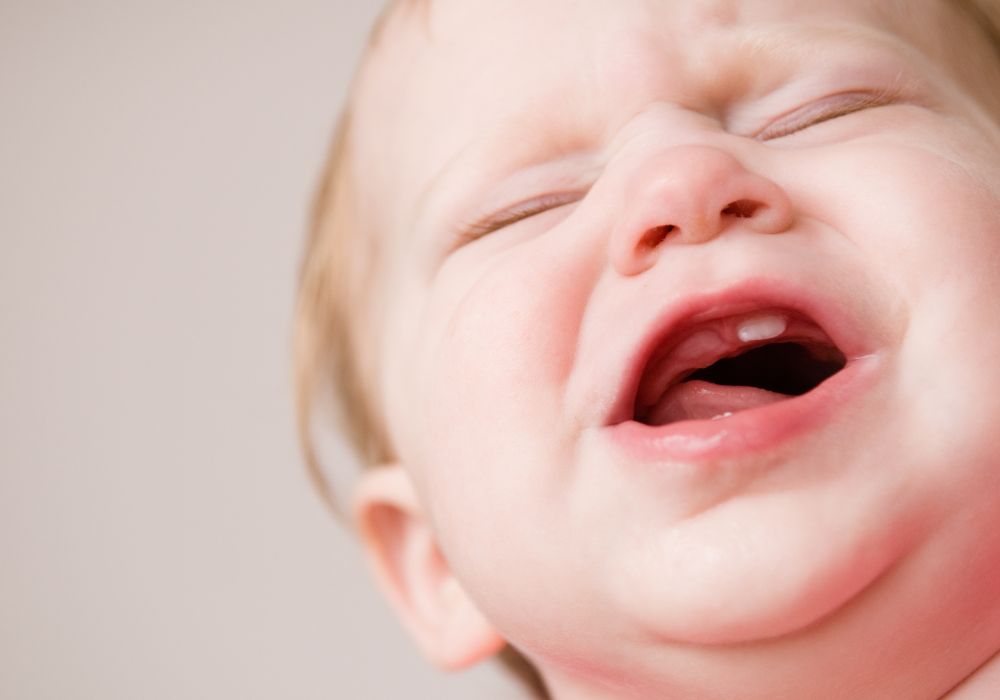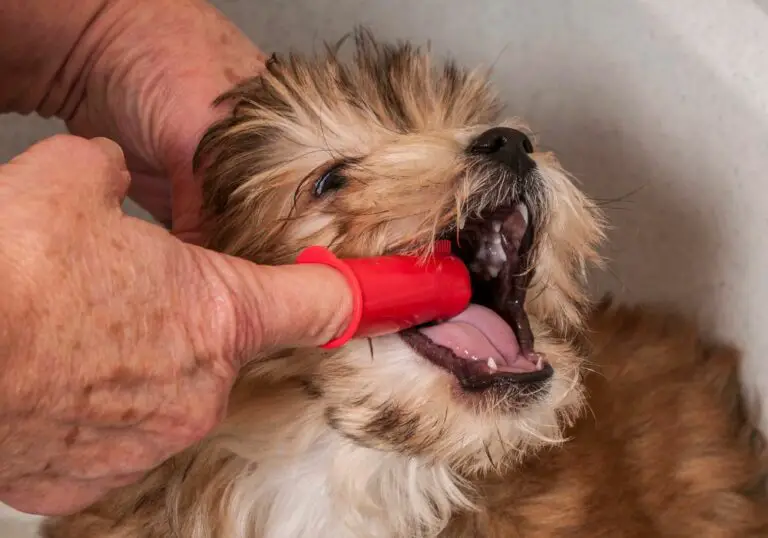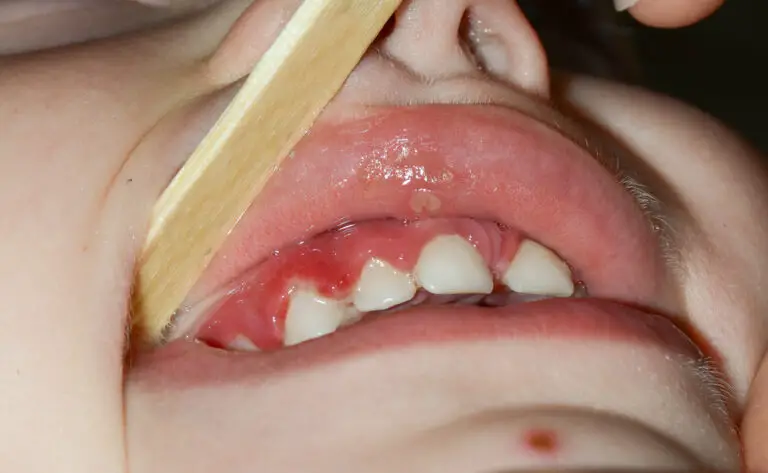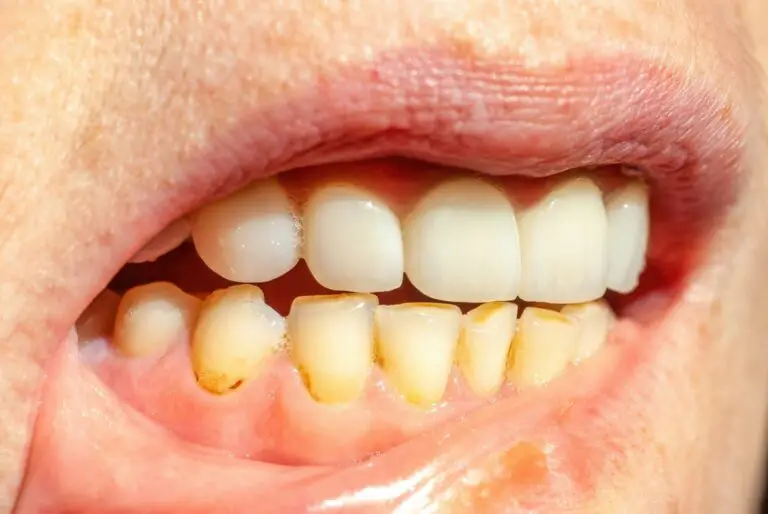Are you a parent with a teething baby? Are you worried about seeing blood on your baby’s gums? Bleeding gums during teething can be a cause for concern, but it is not uncommon. Many babies experience mild bleeding of the gums during the teething process. In this article, we will explore why gums bleed during teething and what you can do to help ease your baby’s discomfort.
Teething is a natural process that every baby goes through, usually starting around six months of age. As your baby’s teeth start to push through the gums, it can cause some discomfort and irritation. This can lead to symptoms such as drooling, fussiness, and even mild bleeding of the gums. While it can be alarming to see blood on your baby’s gums, it is usually nothing to worry about and is a normal part of the teething process.
There are a few things you can do to help ease your baby’s discomfort during teething and reduce the chances of bleeding gums. Simple measures like massaging your baby’s gums with a clean finger or offering a cold teething ring can help soothe sore gums. It is also important to maintain good oral hygiene for your baby, even before their teeth start to emerge. By gently wiping your baby’s gums with a clean, damp cloth after feedings, you can help prevent gum irritation and keep their mouth healthy.
Understanding Teething
Teething is a natural process that every baby goes through, usually starting around six months of age. During this time, your baby’s first set of teeth will begin to emerge through the gums, causing discomfort and sometimes pain. Understanding the symptoms of teething and its timeline can help you better care for your little one during this stage.
Symptoms of Teething
Some common symptoms of teething include drooling, irritability, and a mild amount of bleeding of the gums. Other symptoms may include bruising, tenderness, swelling, pain, and a slight decrease in appetite. Your baby may also start sucking or biting on solid objects to alleviate the discomfort.
Teething Timeline
Teething usually begins around six months of age, but it can start as early as three months or as late as one year. The timeline for teething is different for every baby, but here is a general guide:
| Age (months) | Teeth |
|---|---|
| 6-10 | Bottom front teeth (central incisors) |
| 8-12 | Top front teeth (central incisors) |
| 9-13 | Top lateral incisors (teeth next to central incisors) |
| 10-16 | Bottom lateral incisors |
| 13-19 | First molars |
| 16-23 | Canines (pointed teeth next to lateral incisors) |
| 23-33 | Second molars |
Keep in mind that this is just a general guide, and every baby is different. Some babies may get their teeth earlier or later than this timeline.
In conclusion, teething is a natural process that every baby goes through. Understanding the symptoms of teething and its timeline can help you better care for your little one during this stage. If you have any concerns about your baby’s teething, be sure to talk to your pediatrician.
Why Do Gums Bleed During Teething

Teething is a natural process that every baby goes through, but it can be a painful and uncomfortable experience for both the baby and the parents. One common symptom of teething is bleeding gums. In this section, we will explore why gums bleed during teething and what you can do to help your baby feel more comfortable.
When a baby’s teeth start to come in, they push through the gums, which can cause some irritation and inflammation. This irritation can make the gums more sensitive and prone to bleeding. Additionally, as the teeth move through the gums, they can create small cuts or tears, which can also cause bleeding.
Another reason why gums may bleed during teething is due to the eruption hematoma. This is a small collection of blood just underneath the surface of the gums that can occur when the tooth is cutting through the gums. This hematoma can cause the gums to appear reddish or purplish in color and may cause some bleeding.
It’s important to note that while bleeding gums during teething are common, excessive bleeding or bleeding that lasts for an extended period may be a sign of a more serious issue, such as an infection or gum disease. If you’re concerned about your baby’s bleeding gums, it’s always best to consult with a pediatrician or dentist.
To help alleviate your baby’s discomfort and reduce the likelihood of bleeding gums during teething, there are several things you can do. Here are a few tips:
- Massage your baby’s gums gently with a clean finger or a wet gauze to help relieve some of the discomfort.
- Use a cold spoon or chilled teething ring to soothe your baby’s gums. Be sure not to freeze the teething ring as this can cause damage to the gums.
- Avoid giving your baby hard or crunchy foods or toys that could further irritate the gums.
- Keep your baby’s mouth clean by gently wiping their gums and teeth with a soft cloth or baby toothbrush and water.
In summary, bleeding gums during teething are a common symptom that can be caused by irritation, inflammation, and small cuts or tears in the gums. While it’s usually nothing to worry about, if you’re concerned, it’s always best to consult with a healthcare professional. By following the tips above, you can help alleviate your baby’s discomfort and reduce the likelihood of bleeding gums during teething.
How to Soothe Teething Symptoms
Teething can be a challenging time for both babies and parents. Fortunately, there are ways to soothe teething symptoms and make the experience more comfortable for your little one. Here are some tips to help you out:
Use of Teething Toys
Teething toys can be a great way to provide relief for your baby’s sore gums. Look for toys that are specifically designed for teething and are safe for your baby to chew on. Some popular options include:
- Silicone teethers: These are soft and flexible, making them easy for babies to grip and chew on. They come in a variety of shapes and sizes, including ones that can be frozen for extra relief.
- Wooden teethers: These are made from natural materials and are a good option for babies who prefer harder textures. Just make sure to choose a teether that is free from harmful chemicals and has been properly sanitized.
- Rubber teethers: These are durable and can withstand a lot of chewing. Look for ones that are made from natural rubber and are free from BPA, phthalates, and other harmful chemicals.
Pain Relief Methods
In addition to teething toys, there are other ways to provide pain relief for your baby during the teething process. Here are some options to consider:
- Cold compresses: Applying a cold compress to your baby’s gums can help to numb the pain and reduce inflammation. You can use a clean washcloth soaked in cold water, or try a chilled teething ring or pacifier.
- Massage: Gently massaging your baby’s gums with a clean finger can help to ease the discomfort of teething. Just make sure to wash your hands first and be gentle to avoid causing any further irritation.
- Pain relievers: In some cases, your baby may need a little extra help to manage the pain of teething. Talk to your pediatrician about safe pain relief options, such as infant acetaminophen or ibuprofen.
Remember, every baby is different, and what works for one may not work for another. Be patient and keep trying different methods until you find what works best for your little one. With a little bit of care and attention, you can help your baby get through the teething process with minimal discomfort.
When to Seek Medical Attention

If your baby’s teething symptoms, including bleeding gums, are causing excessive discomfort, you may want to seek medical attention. Here are some situations where you should consider taking your baby to a doctor:
Persistent Bleeding
Bleeding gums during teething are normal, but if the bleeding is persistent and doesn’t stop after applying gentle pressure for 15 minutes, you should seek medical attention. Your baby’s gums may be infected or inflamed, and a doctor can help diagnose and treat the issue.
High Fever
While a slight increase in body temperature is normal during teething, a high fever is not. If your baby’s temperature rises above 100.4 degrees Fahrenheit, you should take them to a doctor. A high fever can be a sign of infection or other underlying health issues that need to be addressed promptly.
In summary, bleeding gums during teething are common, but if your baby’s symptoms are causing excessive discomfort or persisting for an extended period, you should seek medical attention. A doctor can help diagnose and treat any underlying issues and provide relief for your baby’s discomfort.
Frequently Asked Questions
Why do babies’ gums bleed during teething?
Babies’ gums may bleed during teething due to the pressure and inflammation caused by the emerging teeth. This can cause the gums to become sensitive and more prone to bleeding. It is important to note that a small amount of bleeding is normal during teething, but excessive bleeding should be addressed by a pediatric dentist.
What are common signs of teething in babies?
Common signs of teething in babies include drooling, irritability, difficulty sleeping, chewing on objects, and swollen or tender gums. Some babies may also develop a low-grade fever or diarrhea during teething.
How can I soothe my baby’s teething pain?
There are several ways to soothe a baby’s teething pain, including giving them a cold teething ring or washcloth to chew on, massaging their gums with a clean finger, or using a teething gel recommended by a pediatrician. It is important to avoid giving babies teething biscuits or other hard objects that could pose a choking hazard.
Is it normal for a baby’s gums to bleed after a fall?
If a baby falls and hits their mouth, it is possible for their gums to bleed. However, if the bleeding is excessive or does not stop after a few minutes, it is important to seek medical attention. Additionally, if there is any damage to the teeth or mouth, a pediatric dentist should be consulted.
When should I be concerned about my baby’s bleeding gums?
If a baby’s gums are bleeding excessively or if the bleeding does not stop after a few minutes, it is important to seek medical attention. Additionally, if there is any swelling or redness around the gums, or if the baby is experiencing other symptoms such as fever or diarrhea, a pediatrician should be consulted.
What are some tips for brushing a teething toddler’s teeth?
When brushing a teething toddler’s teeth, it is important to use a soft-bristled toothbrush and a fluoride toothpaste recommended by a pediatric dentist. It may be helpful to let the toddler chew on the toothbrush before brushing to help soothe their gums. Additionally, it is important to brush gently and thoroughly, making sure to reach all areas of the mouth.






